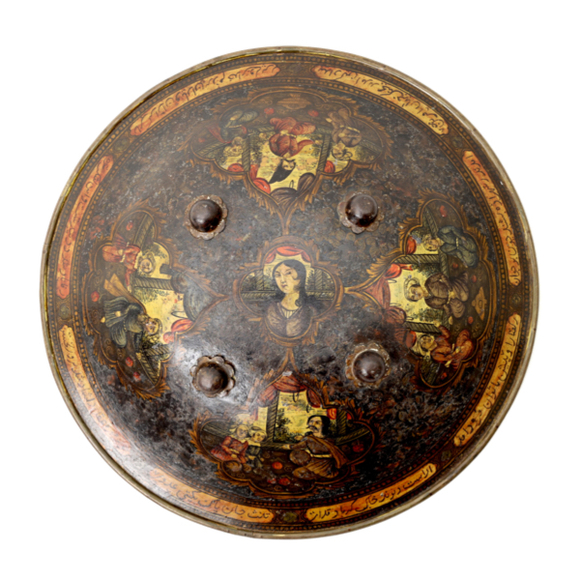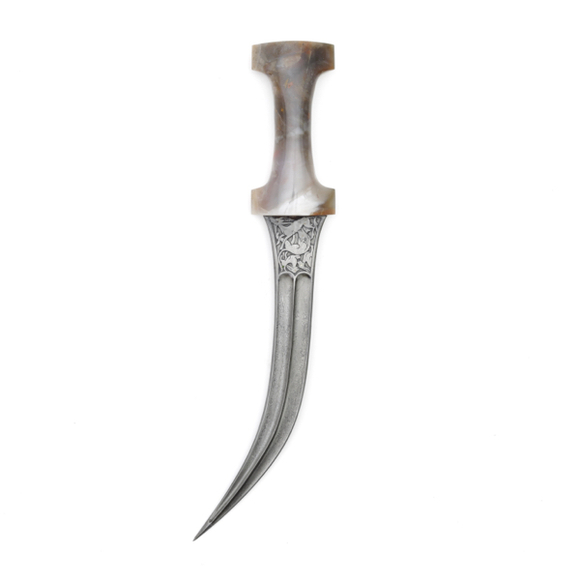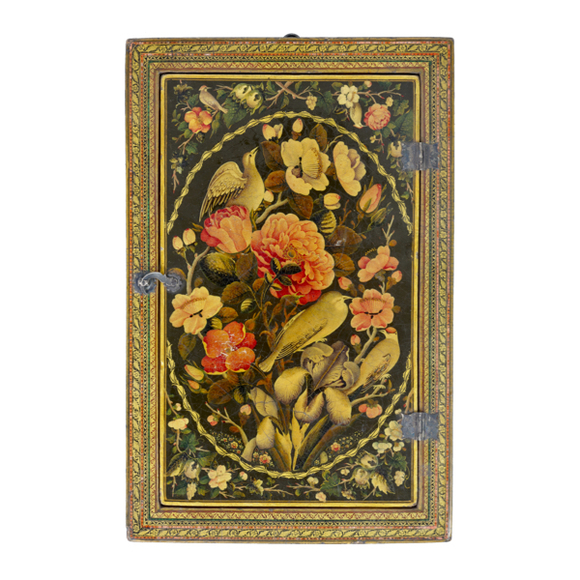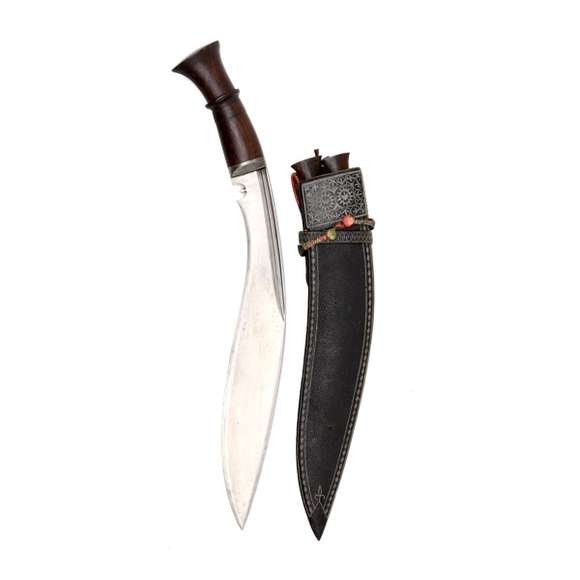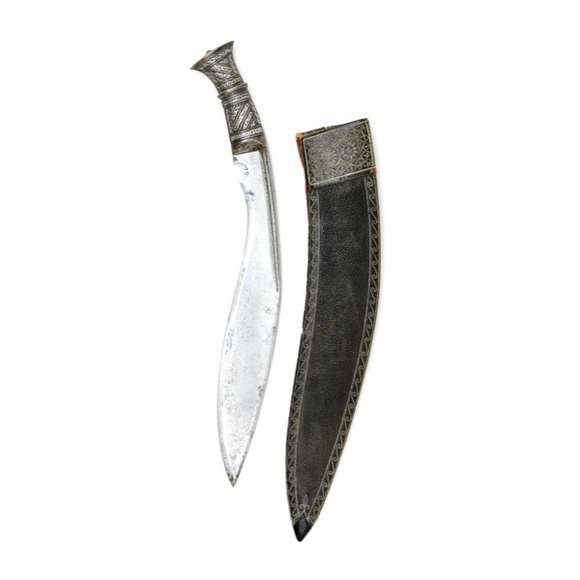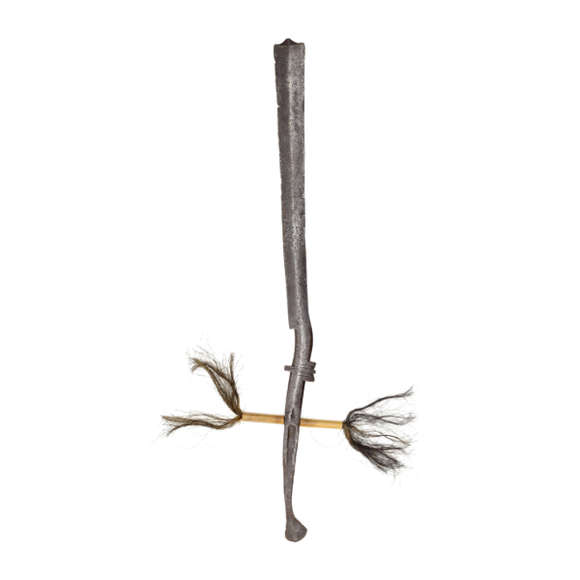Persian steel shield with fine Qajar style painted dome.

56.9 cm
29.8 cm
Base 8 mm
Middle 3.5 cm
5 cm from tip 3 mm
Reinforced tips 5 mm
Base 55 mm
Middle 57 mm
Tip distance 40 mm
486 grams
Iron, wootz steel, brass, gold
Persia
19th century
European antique art market
Introduction
Persian two-pronged spearheads were in use from at least the 16th century, during the Battle of Chaldaran.1 Most examples seem to have bladed that are serrated or wavy, like our example. The majority of extant examples however seems to date from the Qajar period, like this example.
Description
A fine Persian two-pronged spearhead. Each prong with a wavy blade, reinforced tip. A pronounced center rib runs over both blades and joins on the base. The base is decorated with chiseled motifs of a lion and its prey, and typical Persian decorated elements executed in true inlay of gold. This method is much more time-consuming than overlay, uses more gold, but is also a lot more durable than the more common overlay or fire-gilding.
The blades are made of nice, fine-grained wootz steel. I brought out the pattern with a polish and etch, bringing it to a silky finish with good contrast to the wootz.
The spearhead is mounted on a facetted socket, consisting of three tiers each with eight facets, slightly offset to one another. Each facet is decorated with engravings of floral designs and rows of tulips.
The socket is nearly identical to another Persian spearhead listed here at the moment and quite possibly originates from the same workshop.

Both spearheads side-by-side.
Comparable examples
One interesting example is in the Military Museum of Tehran. It bears an inscription attributing it to Shah Ismail Safavid (Ruled 1501-1524 A.D.). It too has a wavy blade and golden decoration at the base.1
Notes
1. Manouchehr Moshtagh Khorasani; Arms and Armor from Iran. Legat Verlag GmbH, Tübingen, 2006. Pages 248 - 249.
2. Ibid.











Nice Persian dagger with fine wootz blade and unusual hilt material.
Made of pasteboard, finely lacquered with roses and nightengales.
An understated, elegant khukuri of substantial proportions with fine layered blade.
With iron, silver overlaid hilt. Its associated scabbard features fine quillwork.
This peculiar sword was used by the Garo people of Assam for fighting, clearing the jungle, and animal…

